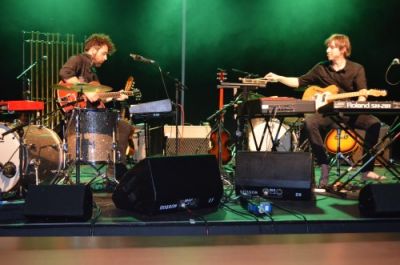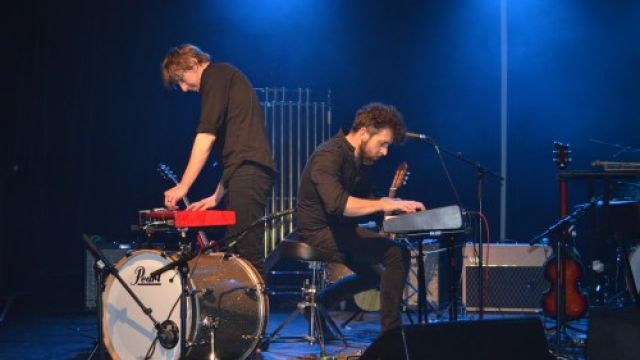Mike Oldfield's Tubular Bells For Two
The only way to keep vinyl records in good nick, my father would tell me, is to never, ever play them. You might wonder just what is the point of having a record you don’t listen to? Dad’s solution was that you should play them just the once in order to make a tape. So this was how I came to have a recorded cassette of Mike Oldfield’s famous concept album Tubular Bells, which I played beside my bed every night to get me to sleep for about ten years of my childhood, only marred by the minutes' silence and loud gasp at the beginning which I accidentally recorded one night by hitting the wrong button by mistake. Consequently there is a sizeable portion of my brain given over to remembering every riff, tinkle and grunt of this amazing, if somewhat self-indulgent, musical offering.
How do these guys compare? I have to say it was pretty darn amazing. Mike Oldfield himself was known for playing most of the instruments, but when he took a show on the road he tended to avail himself of 30 or so musos. There’s only two here, and so from beginning to end the mood is well-organised panic to keep everything moving. At any one moment, they’d be playing while simultaneously preparing instruments to swap over, say shuffling a bass here, laying down a loop there, sitting the mandolin on the standing tom ready to grab for the finale. It was breathtaking to watch.
 Aiden Roberts and Daniel Holdsworth do the musical equivalent of keeping 25 plates spinning on sticks as they swap instruments, play guitar with one hand and keyboards with another, trip a guitar pedal, turn for a quick roll on a cymbal while keeping a riff moving on keyboards, dangle a penny whistle from the lips in preparation for a solo… etc etc etc. Like Oldfield himself, they’re both virtuoso guitarists. The most vibrant bits of the show are where they’ve added their own energy to lead guitar solos to make them heavier and grungier. There was one section where a drumstick went flying, but sound was so dense that it didn’t make a huge difference.
Aiden Roberts and Daniel Holdsworth do the musical equivalent of keeping 25 plates spinning on sticks as they swap instruments, play guitar with one hand and keyboards with another, trip a guitar pedal, turn for a quick roll on a cymbal while keeping a riff moving on keyboards, dangle a penny whistle from the lips in preparation for a solo… etc etc etc. Like Oldfield himself, they’re both virtuoso guitarists. The most vibrant bits of the show are where they’ve added their own energy to lead guitar solos to make them heavier and grungier. There was one section where a drumstick went flying, but sound was so dense that it didn’t make a huge difference.
With the advantage of knowing the music so well, I can tell you how they managed to pull all this together, and it was by extensive use of a loop station, dropping guitar lines here, a bass line there, slicing out less important instrumentation, leaving out the angel voices at the end, sometimes slowing down the tempo just slightly, and slowing right down the changeover between sections. But honestly, that’s not something you’re going to notice unless you spent ten years of your childhood listening to this one piece. You will gape with astonishment that they pull this off. I know I did.
Cathy Bannister
Photographer: Joanne Kee.
Subscribe to our E-Newsletter, buy our latest print edition or find a Performing Arts book at Book Nook.

